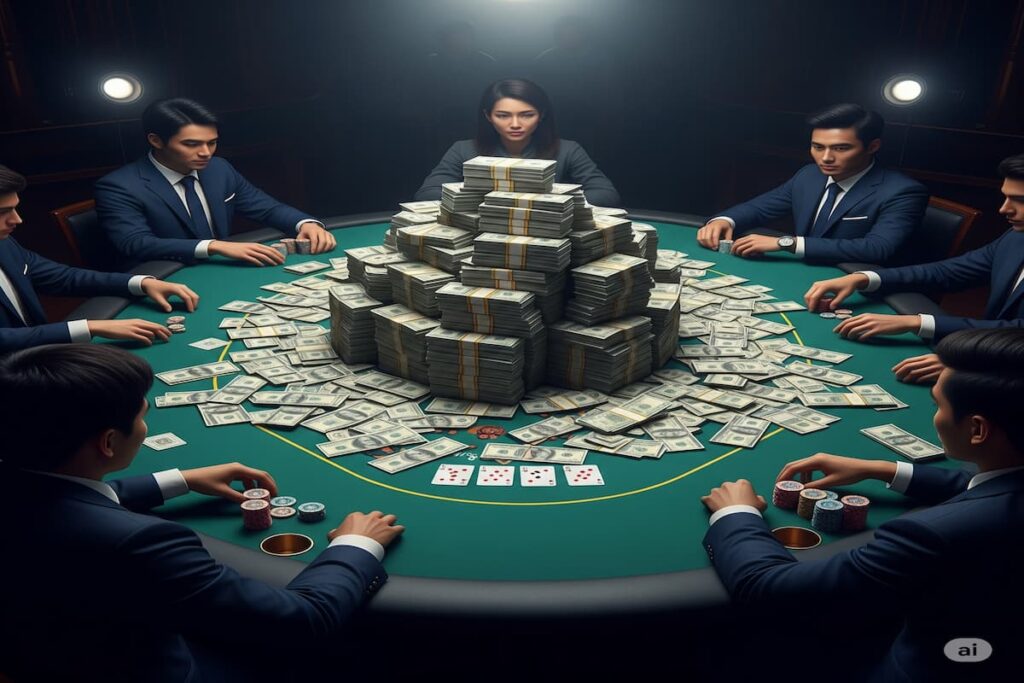Tired of spinning your wheels with poker study, only to see minimal results? What if there was a more intelligent way to approach your off-the-table work, a method designed to build an “incredible Edge” that compounds over time? Forget just copying charts; we’re talking about an optimized study algorithm focused on a single, powerful goal: developing potent, exploitative strategies that leave your opponents scratching their heads. This is the simple method that can elevate your game and, yes, potentially make you millions in the long run.

Stop Studying Everything: Target the Goldmines
The first secret is to stop treating all poker situations as equal. Your study time is precious, so you need to focus it where it matters most. The key is to identify specific spots ripe for exploitation.
Key characteristics to look for:
- High “Complexity Factor”: Seek out situations where the decision tree is complex and players are more likely to make mistakes.
- Intuitive Deviations: Pinpoint common scenarios where players instinctively and significantly stray from what a solver would do.
- Infrequent but Tricky Lines: While players are often solid in common spots (like defending the big blind versus a button open), they make more errors in less frequent situations.
Examples of High-Value Study Spots:
- Small blind vs. big blind 3-bet pots: Specifically, look at lines where the big blind checks the flop, putting the decision back on the small blind.
- Big blind vs. button single-raised pots: Analyze spots where the big blind checks on the flop more often than is optimal, which forces the turn caller to adjust their strategy. These situations present “many ways to make potential mistakes” that you can capitalize on.
The Efficiency Equation: Balancing Frequency and Exploit Value
Finding a “super cool to exploit” spot isn’t enough. If a specific scenario only happens once a month, dedicating 20 hours to mastering it is a poor use of your time. This method emphasizes a crucial balance between how often a spot occurs and the potential EV (Expected Value) you can gain from the exploit.
A river raise exploit that nets you a large pot once per session might be interesting. However, a high-frequency spot where you can gain even a slight edge might be more valuable over the long run. The goal is to find the sweet spot that maximizes your return on study investment.
Wielding Your Tools: Using Solvers the Right Way
The primary tool for this deep study is a solver, with GTO Wizard currently being the “king” of the field. Older tools like Simple Postflop, with its useful “node lock” feature, and FlopZilla, known for its equity visualization, were also valuable, though many of their functions are now part of GTO Wizard.
However, the biggest mistake players make is trying to play exactly like a solver. Solvers are designed to play perfectly against other perfect machines. Your human opponents have leaks. Your goal isn’t to be a perfect GTO bot; it’s to become “invulnerable yourself to have no weak spas that can be attacked” while exploiting your opponents’ weaknesses.
Think of GTO as the foundation. It teaches you the fundamentals: how to realize equity, build strategies, and understand bet sizing. But simply copying a solver “will not make you a great player”. True mastery comes from knowing when and how to deviate. In fact, there are no successful GTO bots playing online; the bots that win are exploitative.
The Art of Exploitation: What Do They Actually Have?
After you’ve laid the GTO groundwork, the “most important skill” is developing the art of figuring out what your opponent is actually holding. This means going beyond theoretical ranges and estimating their
actual range based on real-time information like timing tells and bet sizing. This is what allows you to calculate your true equity and make the best decision.
Final Polish: Critical Thinking and Uncertainty
As you refine your reads, be cautious. It’s easy to fall into the trap of self-deception when it comes to timing tells. A powerful practice is to assign a confidence value to your reads, perhaps on a scale of 1 to 10. Crucially, you should never consider a single factor a 10/10, definitive read. Poker is a game of uncertainty; your ultimate aim is simply to make fewer and smaller mistakes than your opponents over the long haul.
